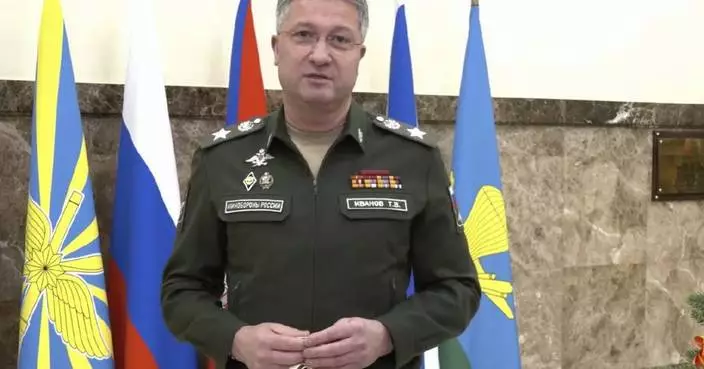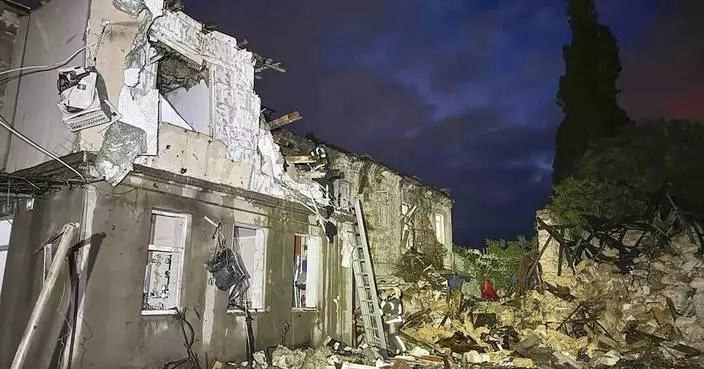Cold-blood slaughter...
A superficial well-behaved policeman was actually a murderer. The Russian serial killer Mikhail Popkov, dubbed the "werewolf", was claimed to have rape and kill over 80 persons, which could make him Russia’s biggest serial killer in the last 100 years.
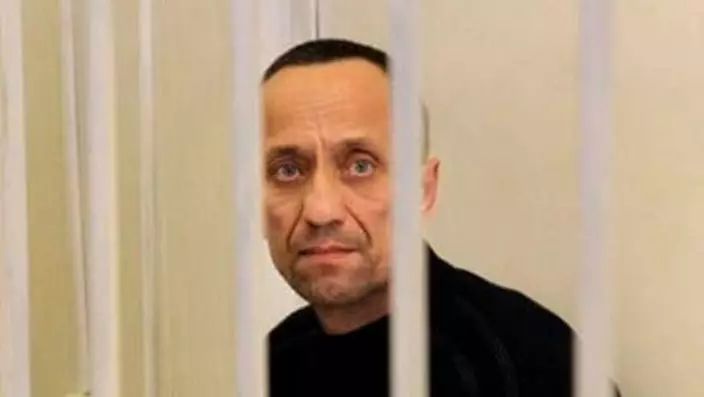
online photo
Mikhail Popkov, 53, was a police officer in Angarsk, Siberia. He has been called "the werewolf" and the "Angarsk maniac" by local media after his sin being revealed. He was sentenced to life imprisonment in January 2015 for assassinating 22 women. In March 2017, he was exposed again for allegedly killing 59 women between 1992 and 2010.

online photo
The latest charges against Popkov include 60 counts of murder were read out on Jan 2018. However, due to the brutal details of the crimes, the trial has not been open to the public in order to protect the privacy of victims. Psychiatric tests run on Popkov have shown that he issane.
Most victims are prostitutes, who were between 17 and 38. In Popkov's early words, he said he want to "clean up" the prostitutes in the city. He usually found the targets in the streets at night, lured them to get up the police car, drove to the remote area like the forest, raped them, and then abandoned their corpses after killing them.

online photo
Even though Mikhail Popkov has murdered more than 80 women including a teacher at his daughter's music school, he says he performed well in his job as a police officer and he was "a good husband and father".

online photo
WASHINGTON (AP) — Ukraine for the first time has begun using long-range ballistic missiles provided secretly by the United States, bombing a Russian military airfield in Crimea last week and Russian forces in another occupied area overnight, American officials said Wednesday.
Long sought by Ukrainian leaders, the new missiles give Ukraine nearly double the striking distance — up to 300 kilometers (190 miles) — that it had with the mid-range version of the weapon that it received from the U.S. last October.
"We’ve already sent some, we will send more now that we have additional authority and money,” White House national security adviser Jake Sullivan said. The additional ATACMS were included in a new military aid package signed by President Joe Biden on Wednesday.
Biden approved delivery of the long-range Army Tactical Missile System, known as ATACMS, in February, and then in March the U.S. included a “significant” number of them in a $300 million aid package announced, officials said.
U.S. officials would not provide the exact number of missiles given last month or in the latest aid package, which totals about $1 billion.
Ukraine has been forced to ration its weapons and is facing increasing Russian attacks. Ukraine had been begging for the long-range system because the missiles provide a critical ability to strike Russian targets that are farther away, allowing Ukrainian forces to stay safely out of range.
Information about the delivery was kept so quiet that lawmakers and others in recent days have been demanding that the U.S. send the weapons — not knowing they were already in Ukraine.
For months, the U.S. resisted sending Ukraine the long-range missiles out of concern that Kyiv could use them to hit deep into Russian territory, enraging Moscow and escalating the conflict. That was a key reason the administration sent the mid-range version, with a range of about 160 kilometers (roughly 100 miles), in October instead.
Adm. Christopher Grady, vice chairman of the Joint Chiefs of Staff, said Wednesday that the White House and military planners looked carefully at the risks of providing long-range fires to Ukraine and determined that the time was right to provide them now.
He told The Associated Press in an interview that long-range weapons will help Ukraine take out Russian logistics nodes and troop concentrations that are not on the front lines. Grady declined to identify what specific weapons were being provided but said they will be “very disruptive if used properly, and I’m confident they will be.”
Like many of the other sophisticated weapons systems provided to Ukraine, the administration weighed whether their use would risk further escalating the conflict. The administration is continuing to make clear that the weapons cannot be used to hit targets inside Russia. At the State Department, spokesman Vedant Patel said Wednesday that Biden directed his national security team to send the ATACMS specifying that they be used inside Ukrainian sovereign territory.
“I think the time is right, and the boss (Biden) made the decision the time is right to provide these based on where the fight is right now,” Grady said Wednesday. “I think it was a very well considered decision, and we really wrung it out — but again, any time you introduce a new system, any change — into a battlefield, you have to think through the escalatory nature of it.”
Ukrainian officials haven’t publicly acknowledged the receipt or use of long-range ATACMS. But in thanking Congress for passing the new aid bill Tuesday, Ukrainian President Volodymyr Zelenskyy noted on the social platform X that “Ukraine’s long-range capabilities, artillery and air defense are extremely important tools for the quick restoration of a just peace.”
One U.S. official said the Biden administration warned Russia last year that if Moscow acquired and used long-range ballistic missiles in Ukraine, Washington would provide the same capability to Kyiv. The official spoke on condition of anonymity to talk about internal discussions.
Russia got some of those weapons from North Korea and has used them on the battlefield in Ukraine, said the official, prompting the Biden administration to greenlight the new long-range missiles.
The U.S. had refused to confirm that the long-range missiles were given to Ukraine until they were actually used on the battlefield and Kyiv leaders approved the public release. One official said the weapons were used early last week to strike the airfield in Dzhankoi, a city in Crimea, a peninsula that Russia seized from Ukraine in 2014. They were used again overnight east of the occupied city of Berdyansk.
Videos on social media last week showed the explosions at the military airfield, but officials at the time would not confirm it was the ATACMS.
"These strikes proved -– once again -– that Ukraine can notch battlefield victories when given the right tools,” said Sen. Roger Wicker of Mississippi, the top Republican on the Senate Armed Services Committee who has long pressed the administration to send the long-range weapons.
Ukraine’s first use of the weapon came as political gridlock in Congress had delayed approval of a $95 billion foreign aid package for months, including funding for Ukraine, Israel and other allies. Facing acute shortages of artillery and air defense systems, Ukraine has been rationing its munitions as U.S. funding was delayed.
With the war now in its third year, Russia used the delay in U.S. weapons deliveries and its own edge in firepower and personnel to step up attacks across eastern Ukraine. It has increasingly used satellite-guided gliding bombs — dropped from planes from a safe distance — to pummel Ukrainian forces beset by a shortage of troops and ammunition.
The mid-range missiles provided last year, and some of the long-range ones sent more recently, carry cluster munitions that open in the air when fired, releasing hundreds of bomblets rather than a single warhead. Others sent recently have a single warhead.
One critical factor in the February decision to send the weapons was the U.S. Army’s ability to begin replacing the older ATACMS. The Army is now buying the Precision Strike Missile, so is more comfortable taking ATACMS off the shelves to provide to Ukraine, the official said.
At the White House, Sullivan said the administration “has worked relentlessly to address those concerns" and stocks are now coming off the production line and the ATACMS can be sent without hurting U.S. military readiness.
Associated Press writers Ellen Knickmeyer and Aamer Madhani contributed to this report.
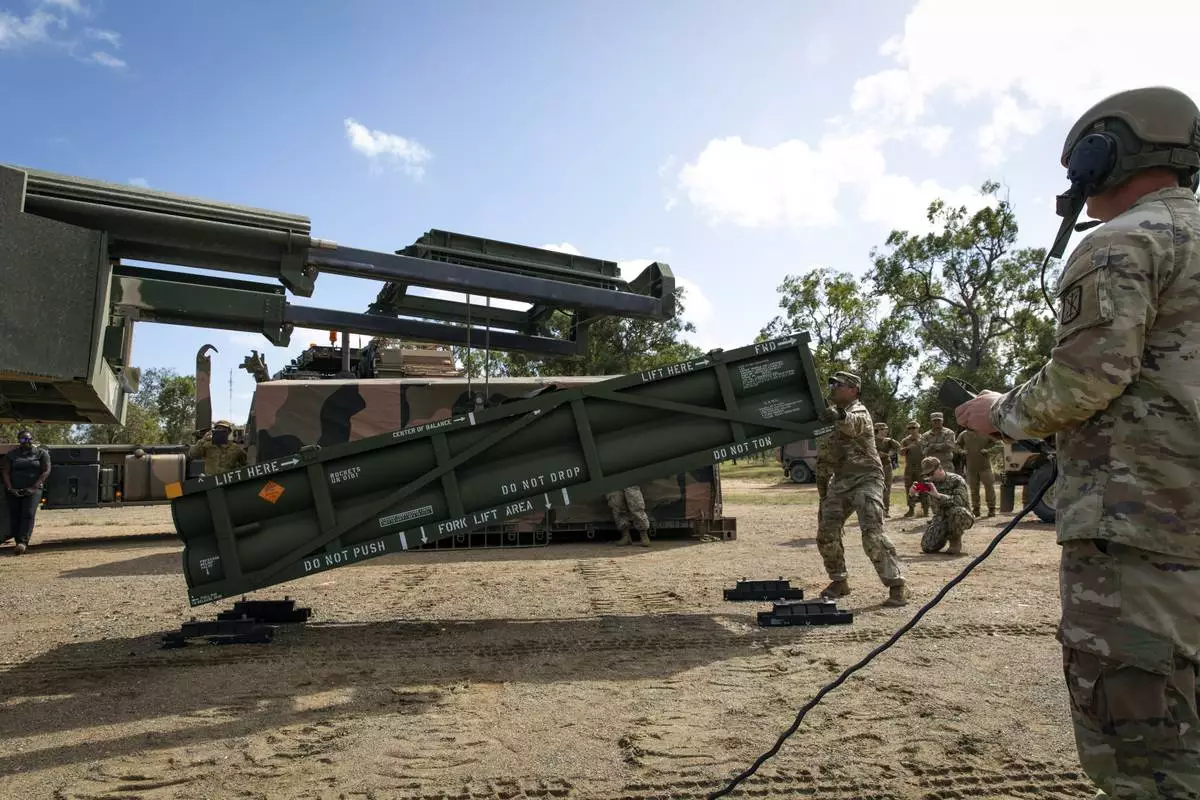
In this image provided by the U.S. Army U.S. Army Staff Sgt. Jimmy Lerma, crew chief for Alpha Battery, 1st Battalion, 3rd Field Artillery Regiment, 17th Field Artillery Brigade, adjusts the Army Tactical Missile System (ATACMS) for loading on to the High Mobility Artillery Rocket System (HIMARS) at Williamson Airfield in Queensland, Australia, on July 26, 2023. U.S. officials say Ukraine for the first time has begun using long-range ballistic missiles, called ATACMS, striking a Russian military airfield in Crimea and Russian troops in another occupied area overnight. (Sgt. 1st Class Andrew Dickson/U.S. Army via AP)
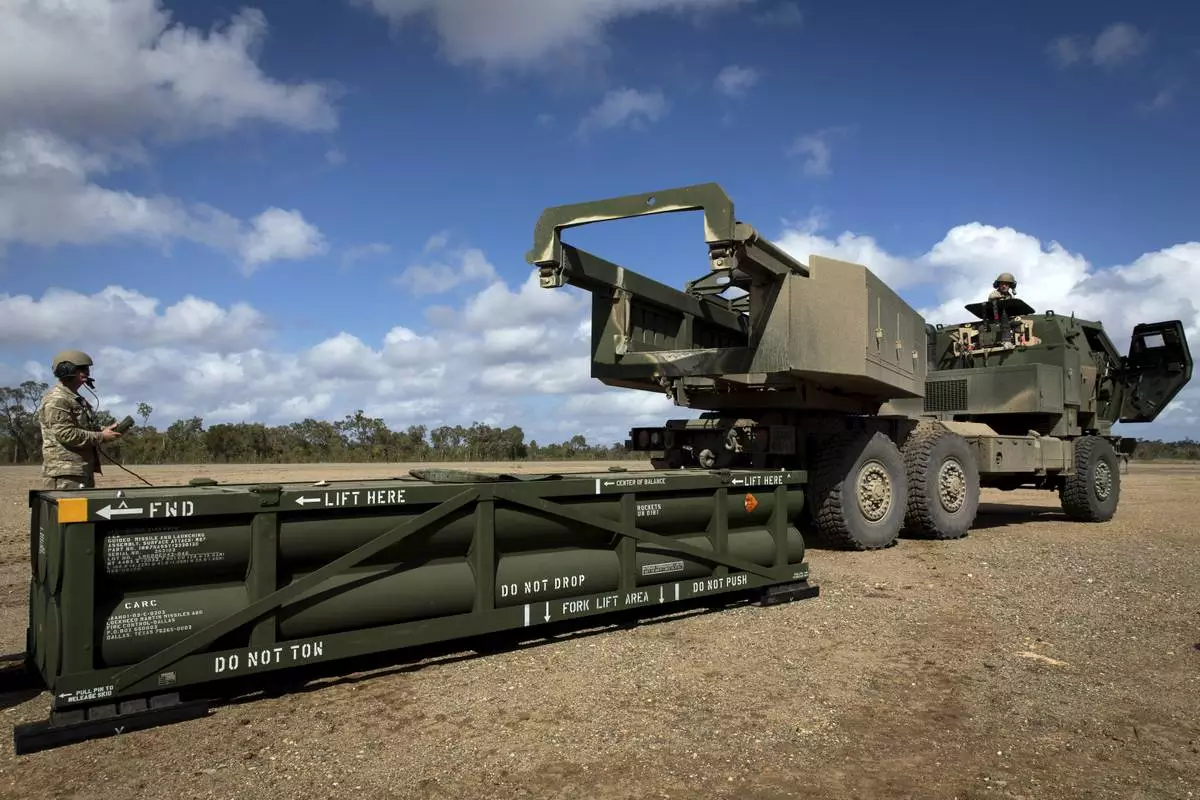
In this image provided by the U.S. Army, U.S. Army Sgt. Ian Ketterling, gunner for Alpha Battery, 1st Battalion, 3rd Field Artillery Regiment, 17th Field Artillery Brigade, prepares the crane for loading the Army Tactical Missile System (ATACMS) on to the High Mobility Artillery Rocket System (HIMARS) in Queensland, Australia, July 26, 2023. U.S. officials say Ukraine for the first time has begun using long-range ballistic missiles, called ATACMS, striking a Russian military airfield in Crimea and Russian troops in another occupied area overnight. (Sgt. 1st Class Andrew Dickson/U.S. Army via AP)

President Joe Biden speaks before signing a $95 billion Ukraine aid package that also includes support for Israel, Taiwan, and other allies, in the State Dining Room of the White House, Wednesday, April 24, 2024, in Washington. (AP Photo/Evan Vucci)

FILE - A Ukrainian national flag waves over the center of Kharkiv, Ukraine's second-largest city, Feb. 16, 2022. U.S. officials say Ukraine for the first time has begun using long-range ballistic missiles, striking a Russian military airfield in Crimea and Russian troops in another occupied area overnight. (AP Photo/Mstyslav Chernov, File)

FILE - In this image provided by the U.S. Army, soldiers, from the 3rd Battalion, 321st Field Artillery Regiment of the 18th Field Artillery Brigade out of Fort Bragg N.C., conduct live fire testing at White Sands Missile Range, N.M., on Dec. 14, 2021, of early versions of the Army Tactical Missile System. U.S. officials say Ukraine for the first time has begun using long-range ballistic missiles, striking a Russian military airfield in Crimea and Russian troops in another occupied area overnight. The strikes come about a month after the U.S. secretly provided the weapons so that Ukraine could strike targets up to 190 miles away. (John Hamilton/U.S. Army via AP, file)














